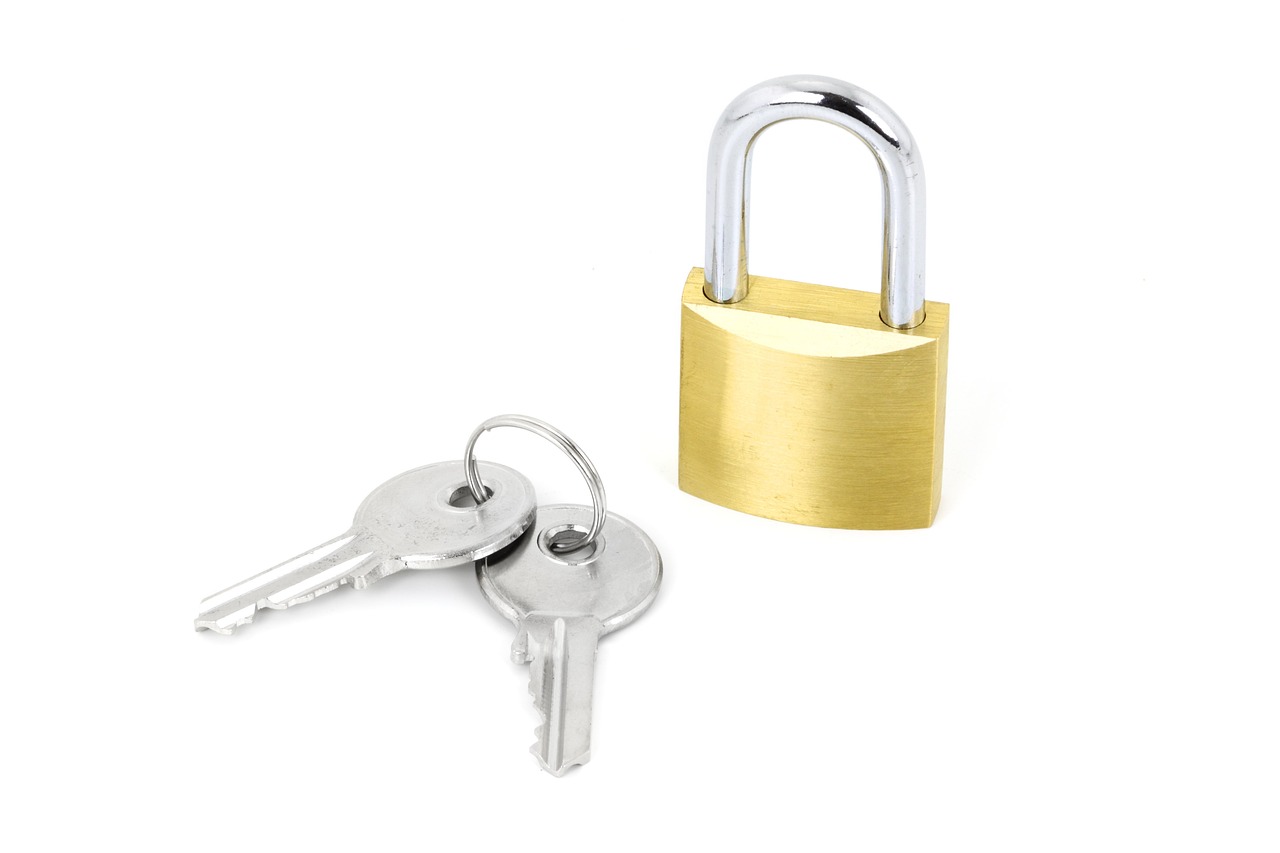How to Prevent Identity Theft Online
In today’s digital age, where our lives are intertwined with technology, the threat of identity theft looms larger than ever. With just a few clicks, an identity thief can access your personal information, leaving you vulnerable to financial loss and emotional turmoil. It's a scary thought, isn't it? But fear not! By understanding the landscape of identity theft and taking proactive measures, you can safeguard your personal information and maintain your peace of mind. This article dives deep into effective strategies to protect yourself online, highlighting preventive measures, tools, and best practices for maintaining your online security.
Identity theft is more than just a buzzword; it’s a serious crime that involves the unauthorized use of someone’s personal information, such as social security numbers, bank account details, and credit card information. Imagine waking up one day to find out that someone has taken out loans in your name or emptied your bank account. The implications can be devastating, leading not only to financial loss but also to emotional distress as you navigate the aftermath. Recognizing the implications of identity theft is crucial for effective prevention. The more you know, the better equipped you are to defend yourself.
Identity thieves are crafty and resourceful, employing various tactics to steal your information. Understanding these methods can help you identify potential threats and protect your information. Here are some of the most common methods:
- Phishing: This involves deceptive attempts to obtain sensitive information through fraudulent emails or websites.
- Data Breaches: These occur when unauthorized individuals access sensitive information stored by companies.
- Malware: Malicious software can infiltrate your devices and steal your personal information without your knowledge.
Being aware of these tactics is the first step in fortifying your defenses against identity theft.
Phishing scams are one of the most prevalent methods employed by identity thieves. They often disguise themselves as legitimate entities, tricking you into providing sensitive information. Awareness and caution can significantly reduce the risk of falling victim to these scams. So, how can you protect yourself? By educating yourself about the signs of phishing emails, you can become your own best defense.
Identifying signs of phishing emails is essential in preventing unauthorized access to your personal data. Look out for:
- Poor grammar and spelling: Legitimate organizations usually have professional communication.
- Suspicious links: Hover over links to see where they lead before clicking.
- Urgent language: Scammers often create a false sense of urgency to prompt quick action.
By being vigilant and questioning the legitimacy of emails, you can keep your information secure.
Adopting safe browsing practices is another crucial step in protecting yourself from phishing attacks and identity theft. Always check URLs before entering personal information and avoid using public Wi-Fi for sensitive transactions. Think of it like locking your front door; it’s a simple yet effective way to keep unwanted guests out. Implementing these practices can greatly reduce the risk of falling prey to online scams.
Data breaches are another common method through which identity thieves gain access to sensitive information. These breaches occur when unauthorized individuals infiltrate databases containing personal data. Understanding how breaches happen can help you take proactive measures to protect your data. For instance, keeping your software updated and using reputable security tools can drastically reduce your risk of being affected by a data breach.
Implementing strategies to protect your personal information is vital in today’s digital landscape. Here are some effective methods you can employ:
Creating strong, unique passwords is a fundamental step in protecting your online accounts. Think of your password as the key to your castle; the stronger the key, the harder it is for intruders to gain entry. Utilizing password managers can help you maintain complex passwords without the hassle of remembering each one. This way, you can have peace of mind knowing that your accounts are secure.
Two-factor authentication adds an extra layer of security by requiring a second form of verification. It’s like having a bouncer at the door of your online accounts. Even if someone manages to get your password, they still won’t be able to access your accounts without that second piece of information. This practice significantly reduces the risk of unauthorized access and is highly recommended for all your important accounts.
Q: What should I do if I suspect my identity has been stolen?
A: If you suspect identity theft, immediately contact your bank and credit card companies, place a fraud alert on your credit report, and consider filing a report with the Federal Trade Commission (FTC).
Q: How often should I change my passwords?
A: It’s advisable to change your passwords every three to six months, especially for sensitive accounts.
Q: Are public Wi-Fi networks safe for online banking?
A: No, public Wi-Fi networks are generally not safe for online banking. Use a secure, private connection whenever possible.
Q: What is a data breach?
A: A data breach occurs when unauthorized individuals gain access to sensitive information stored by organizations, potentially exposing your personal data.

Understanding Identity Theft
Identity theft is a serious crime that can have devastating effects on individuals and families. It involves the unauthorized use of someone’s personal information—like Social Security numbers, credit card details, or bank account information—leading not only to financial loss but also to significant emotional distress. Imagine waking up one day to find out that someone has been living your life, racking up debts in your name, and ruining your credit score. It’s a nightmare that is more common than you might think.
Recognizing the implications of identity theft is crucial for effective prevention. The emotional toll can be overwhelming, with victims often feeling violated and anxious about their financial security. Moreover, the process of recovering from identity theft can be lengthy and complicated, often requiring victims to spend countless hours on the phone with banks, credit bureaus, and law enforcement. Consequently, understanding what identity theft is and how it occurs is the first step in safeguarding your personal information.
Identity theft can occur in various forms, and being aware of these can help you take proactive measures. For instance, it can happen through:
- Stolen personal information: This could be through physical theft, such as someone stealing your wallet.
- Online scams: Cybercriminals often use sophisticated methods to trick you into revealing your personal data.
- Data breaches: When companies experience security breaches, your information can be exposed to malicious actors.
In essence, identity theft is not just about financial loss; it’s about the invasion of your privacy and the trust you place in others, including institutions that hold your personal information. To effectively combat this crime, it’s essential to stay informed and vigilant. This means regularly monitoring your financial accounts, using secure passwords, and being cautious about the information you share online.
As we delve deeper into the world of identity theft, remember that knowledge is power. By understanding the tactics employed by identity thieves and recognizing the signs of potential threats, you can better protect yourself and your loved ones from becoming victims. Stay tuned as we explore common methods of identity theft and how you can safeguard your personal information.

Common Methods of Identity Theft
Identity theft is a serious issue that can happen to anyone, anywhere, at any time. It's like a thief sneaking into your life, stealing not just your money but also your peace of mind. Understanding the common methods used by identity thieves is crucial in safeguarding your personal information. These criminals are clever and resourceful, employing various tactics to exploit unsuspecting individuals. By being aware of these methods, you can arm yourself with the knowledge needed to protect your identity.
One of the most prevalent tactics is phishing. Phishing scams are deceptive attempts to obtain sensitive information such as usernames, passwords, and credit card details by masquerading as a trustworthy entity in electronic communications. Imagine receiving an email that looks like it’s from your bank, asking you to verify your account information. It’s designed to look legitimate, but a closer inspection often reveals telltale signs of fraud. Phishing can also occur through fake websites that mimic real ones, tricking users into entering their personal information.
Phishing scams can take many forms, but they generally share a few common characteristics. These include:
- Urgency: Many phishing emails create a sense of urgency, prompting you to act quickly without thinking.
- Generic Greetings: Most legitimate companies will address you by name; phishing emails often use generic greetings like "Dear Customer."
- Suspicious Links: Hovering over links in an email can reveal their true destination, which may not match the displayed text.
By being aware of these signs, you can better protect yourself from falling victim to such scams.
Another method identity thieves use is through data breaches. These occur when unauthorized individuals gain access to sensitive information stored by companies, often due to inadequate security measures. When a company suffers a data breach, personal information such as names, addresses, and even social security numbers can be exposed. Understanding how these breaches happen is vital. They can occur due to weak passwords, outdated software, or even insider threats. To illustrate, consider a major retail chain that experiences a data breach; if you’ve shopped there, your information could be at risk.
To minimize the risk of being affected by a data breach, it’s essential to stay informed about the companies you engage with and their security practices. Many organizations will notify customers in the event of a breach, but it’s wise to take proactive measures to protect your data, such as regularly monitoring your financial statements and utilizing credit monitoring services.
Implementing strategies to protect personal information is vital. This section discusses various methods, from strong passwords to secure connections, to enhance online security.
Creating strong, unique passwords is a fundamental step in protecting online accounts. Utilizing password managers can help individuals maintain complex passwords without the hassle of remembering each one.
Two-factor authentication adds an extra layer of security by requiring a second form of verification. This practice significantly reduces the risk of unauthorized access to accounts.
Q: What should I do if I suspect my identity has been stolen?
A: If you suspect identity theft, immediately contact your bank and credit card companies. Report the theft to the Federal Trade Commission (FTC) and file a police report.
Q: How can I monitor my credit for signs of identity theft?
A: You can regularly check your credit reports for free at AnnualCreditReport.com. Consider enrolling in a credit monitoring service for additional protection.
Q: What are some signs that I might be a victim of identity theft?
A: Signs include unfamiliar charges on your accounts, receiving bills or statements for accounts you didn’t open, or being denied credit unexpectedly.

Phishing Scams
Phishing scams are among the most common tactics used by identity thieves to trick individuals into revealing their sensitive information. These scams typically involve fraudulent emails or websites that appear to be legitimate, designed to lure unsuspecting victims into providing personal details such as passwords, credit card numbers, or Social Security numbers. Imagine receiving an email that looks like it’s from your bank, urging you to click a link to verify your account. At first glance, it seems harmless, but it could be a cleverly disguised trap set by a cybercriminal.
Awareness is your best defense against these deceptive practices. Recognizing the signs of phishing can significantly reduce your risk of becoming a victim. Some common indicators include:
- Generic Greetings: Phishing emails often start with “Dear Customer” instead of your actual name.
- Urgency: Many phishing attempts create a false sense of urgency, pressuring you to act quickly to avoid losing access to your account.
- Suspicious Links: Hovering over links can reveal the actual URL, which often doesn’t match the purported source.
- Poor Grammar and Spelling: Legitimate organizations typically proofread their communications, so errors can be a red flag.
To further protect yourself, it’s essential to adopt safe browsing practices. Always double-check the URL of any website you visit, especially when entering sensitive information. If you receive an email that seems suspicious, don’t click any links or download attachments. Instead, visit the official website directly by typing the URL into your browser. This simple action can save you from falling into a phishing trap.
Another effective strategy is to utilize email filters and security software that can help detect and block phishing attempts. Many email providers offer features that automatically filter out suspicious emails, but it’s always wise to remain vigilant. After all, when it comes to your personal information, it’s better to be safe than sorry!
In conclusion, phishing scams are a significant threat in today’s digital landscape, but by being aware of their tactics and adopting safe practices, you can protect yourself from becoming a victim. Remember, your information is valuable, and it’s worth taking the time to safeguard it.
Q: What should I do if I think I’ve fallen for a phishing scam?
A: If you suspect you’ve provided sensitive information to a phishing scam, immediately change your passwords and contact your bank or credit card company to report the incident. Monitor your accounts for any unauthorized transactions.
Q: How can I recognize a legitimate email from my bank?
A: Legitimate emails from your bank typically address you by name, do not create a sense of urgency, and will never ask for sensitive information. Always verify by contacting your bank directly if in doubt.
Q: Are there tools to help protect against phishing?
A: Yes, there are several tools available, including email filtering software, browser extensions, and antivirus programs that can help detect phishing attempts and protect your personal information.

Recognizing Phishing Emails
Phishing emails can be incredibly deceptive, often masquerading as legitimate messages from trusted sources. To effectively protect yourself, it's crucial to recognize the signs of these fraudulent communications. One of the most common indicators is the presence of poor grammar or spelling mistakes. Legitimate companies typically have strict communication standards, so any email with glaring errors should raise a red flag.
Another telltale sign is the use of urgency or threats to compel you to act quickly. Phishing emails often claim that your account will be suspended or that immediate action is required to prevent a security breach. This tactic is designed to catch you off guard, prompting you to click on malicious links without thinking. Always take a moment to breathe and assess the situation before responding to such claims.
Additionally, be wary of emails that ask for sensitive information or direct you to a website where you need to input personal details. Legitimate organizations will never request sensitive information via email. If you receive such a request, it's best to contact the company directly through official channels to verify its authenticity.
Here are some key elements to look out for when evaluating an email:
- Sender's Email Address: Check if the email address looks suspicious or doesn't match the organization's domain.
- Links: Hover over any links (without clicking) to see the actual URL. If it looks strange or unrelated, don't click!
- Attachments: Be cautious of unexpected attachments, as they can contain malware.
By staying informed and vigilant, you can significantly reduce your chances of falling victim to phishing scams. Always trust your instincts; if something feels off, it's better to err on the side of caution.
What should I do if I suspect an email is a phishing attempt?
If you suspect an email is phishing, do not click any links or download attachments. Report the email to your email provider and the organization it claims to be from.
Can I recover my information if I've fallen victim to phishing?
It depends on the situation. If you’ve provided sensitive information, immediately change your passwords and contact your bank or credit card company. They can help mitigate any potential damage.
How can I educate others about phishing scams?
Share your knowledge! Talk to friends and family about the signs of phishing emails and encourage them to be cautious with their online communications.

Safe Browsing Practices
When it comes to protecting your personal information online, adopting safe browsing practices is like putting on a seatbelt before driving. It may seem simple, but it can make all the difference in ensuring your safety. One of the first steps is to always check the URL of the websites you visit. Are you sure that you’re on the official site? A tiny misspelling can lead you to a fraudulent page designed to steal your information. For instance, instead of “www.example.com,” you might end up on “www.examp1e.com” – see how easy it is to get tricked?
Another essential practice is to avoid using public Wi-Fi for sensitive transactions. Imagine you’re sitting in a bustling café, sipping your coffee while logging into your bank account. Sounds convenient, right? But that public Wi-Fi is like leaving your front door wide open for anyone to walk in. Hackers can easily intercept your data. If you must use public Wi-Fi, consider using a Virtual Private Network (VPN). This encrypts your data, making it much harder for cybercriminals to access your information.
Moreover, always keep your browser updated. Browsers regularly release updates that patch security vulnerabilities. If you ignore these updates, you’re leaving a backdoor open for identity thieves. It's like ignoring a warning about a faulty lock on your front door. So, make it a habit to check for updates regularly.
Lastly, be cautious about what personal information you share online. Think before you post! Social media is a treasure trove of information for identity thieves. They can piece together bits of your life from your posts, making it easier for them to impersonate you. So, keep your profile settings private and be selective about what you share.
To summarize, here are some to keep in mind:
- Always check URLs for authenticity.
- Avoid public Wi-Fi for sensitive transactions.
- Use a VPN when necessary.
- Keep your browser updated.
- Be cautious about sharing personal information.
By incorporating these practices into your daily online routine, you can significantly reduce the risk of falling victim to identity theft. Remember, staying safe online requires vigilance and a proactive approach!
Q: What should I do if I suspect my identity has been stolen?
A: If you suspect your identity has been compromised, immediately report it to your bank and credit card companies. Consider placing a fraud alert on your credit report and file a report with the Federal Trade Commission (FTC).
Q: How often should I change my passwords?
A: It’s recommended to change your passwords every three to six months, and immediately if you suspect any suspicious activity.
Q: Is it safe to shop online?
A: Yes, shopping online can be safe if you follow best practices such as using secure payment methods, shopping on reputable websites, and ensuring the site uses HTTPS.
Q: What is two-factor authentication?
A: Two-factor authentication is an extra layer of security that requires not only a password but also a second form of verification, such as a text message code or an authentication app.

Data Breaches
Data breaches are a significant threat in our increasingly digital world. These breaches occur when unauthorized individuals gain access to sensitive information stored by companies, often leading to devastating consequences for both the organizations and their customers. Imagine waking up one day to find out that your personal information, including your Social Security number, credit card details, and other sensitive data, has been compromised. It’s a nightmare scenario that can lead to financial loss, identity theft, and a long, arduous journey to reclaim your identity.
Understanding how data breaches happen is crucial for effective prevention. They can occur due to various reasons, such as:
- Weak Security Measures: Companies that do not implement robust security protocols are more vulnerable to attacks.
- Employee Negligence: Sometimes, employees inadvertently expose sensitive data through careless actions, like clicking on phishing links.
- Malware Attacks: Cybercriminals often use malicious software to infiltrate systems and extract personal information.
When a data breach occurs, the fallout can be extensive. Companies may face hefty fines, loss of consumer trust, and significant damage to their reputation. For individuals, the impact can be even more personal. Victims of data breaches often experience a range of emotional responses, from anger to anxiety, as they grapple with the potential consequences of their compromised information. It’s essential to stay informed about data breaches affecting organizations you engage with, as this knowledge can empower you to take necessary actions to protect your information.
To mitigate the risks associated with data breaches, consider the following proactive measures:
- Monitor Your Accounts: Regularly check your bank and credit card statements for any unauthorized transactions.
- Use Credit Monitoring Services: These services can alert you to any suspicious activity related to your credit report.
- Be Cautious with Personal Information: Limit the amount of personal information you share online and with companies.
In conclusion, while data breaches can happen to anyone, being proactive and informed can significantly reduce your risk. Remember, the best defense is a good offense. Stay vigilant, educate yourself about the latest security threats, and take control of your personal information to safeguard your identity in this digital age.
- What should I do if my information has been compromised in a data breach?
If you suspect your information has been compromised, immediately change your passwords, monitor your accounts for unauthorized transactions, and consider placing a fraud alert on your credit report.
- How can I find out if a company I use has experienced a data breach?
You can check websites like Have I Been Pwned or monitor news outlets for announcements regarding data breaches involving companies you interact with.
- What is two-factor authentication, and how does it help?
Two-factor authentication adds an additional layer of security by requiring not only a password but also a second form of verification, such as a text message code, making it harder for unauthorized users to access your accounts.

Protecting Personal Information
In today's digital landscape, protecting your personal information is not just a good idea; it's a necessity. With the rise of online transactions and digital communication, the risks associated with identity theft have escalated dramatically. But fear not! By employing some effective strategies, you can greatly enhance your online security and keep those pesky identity thieves at bay. Think of your personal information as a treasure chest; you wouldn’t leave it unlocked in a crowded marketplace, would you? Similarly, you must take proactive measures to safeguard your digital assets.
One of the most fundamental steps to protect yourself is by creating strong passwords. A strong password is like a sturdy lock on your treasure chest; it should be complex, unique, and not easily guessable. Instead of using easily identifiable information like your name or birthdate, consider mixing letters, numbers, and special characters. For instance, instead of “JohnDoe123,” try something like “J0hN!D0e#2023.” This makes it significantly harder for thieves to crack your code. To help manage these complex passwords, you might want to consider using a password manager. These tools can generate and store your passwords securely, making it easier to maintain unique passwords for each of your accounts without the headache of memorizing them all.
Another layer of protection that is becoming increasingly popular is two-factor authentication (2FA). This security measure requires not just a password but also a second form of verification, such as a text message or an authentication app. Think of it as having a security guard who checks your ID before letting you into a club. Even if someone manages to get hold of your password, they would still need that second piece of information to gain access to your accounts. This extra layer of security can significantly reduce the risk of unauthorized access and provide peace of mind.
Moreover, it's crucial to be aware of your online behavior. Avoid sharing too much personal information on social media platforms, as identity thieves often scour these sites looking for easy targets. You might think you’re just sharing a fun family photo, but that could inadvertently reveal information that leads to identity theft. Additionally, always be cautious about the websites you visit. Ensure that they are secure (look for “https” in the URL) and avoid entering personal information on sites that seem sketchy or untrustworthy.
Finally, consider using a VPN (Virtual Private Network) when accessing public Wi-Fi. Public networks are notorious for being insecure, making them prime hunting grounds for identity thieves. A VPN encrypts your internet connection, adding an extra layer of security that can protect your data even when you’re on a public network. It’s like having a secret tunnel to your treasure chest, keeping it safe from prying eyes.
In conclusion, protecting your personal information online requires a combination of strong passwords, two-factor authentication, cautious online behavior, and secure connections. By implementing these strategies, you can significantly reduce your risk of falling victim to identity theft and enjoy a safer online experience.
Below are some common questions regarding the protection of personal information online:
- What is the best way to create a strong password? Use a mix of uppercase letters, lowercase letters, numbers, and special characters. Avoid using easily guessed information like birthdays or names.
- How does two-factor authentication work? It adds an extra layer of security by requiring a second form of verification, such as a text message or an authentication app, in addition to your password.
- Is it safe to use public Wi-Fi? Public Wi-Fi can be risky. If you must use it, consider using a VPN to encrypt your connection.
- How can I tell if a website is secure? Look for URLs that start with "https" and check for a padlock icon in the address bar.

Strong Passwords
Creating strong, unique passwords is a fundamental step in protecting your online accounts. Think of your password as the lock on your front door; if it’s weak, it’s like leaving your door wide open for anyone to walk in. In today's digital landscape, where cyber threats are lurking around every corner, having a robust password is not just advisable—it's essential. A strong password typically includes a mix of uppercase and lowercase letters, numbers, and special characters. For example, instead of using something simple like "password123," a better option would be "P@55w0rd!2023".
But let’s be real: remembering all those complicated passwords can feel like a Herculean task. That’s where password managers come into play. These handy tools can generate and store complex passwords for you, so you don’t have to rely on your memory. Imagine having a personal vault where all your passwords are securely kept, and you only need to remember one master password to access it. It’s like having a digital bodyguard for your sensitive information!
Now, you might be wondering, “How do I know if my password is strong enough?” Here are some key characteristics to look for:
- Length: Aim for at least 12 characters; longer is usually better.
- Complexity: Use a combination of letters, numbers, and symbols.
- Unpredictability: Avoid common phrases or easily guessable information, like your birthday.
Additionally, it’s important to change your passwords regularly. Just like you wouldn’t wear the same outfit every day for a month, you shouldn’t use the same password indefinitely. Regular updates can significantly reduce the chances of your accounts being compromised. To make this process easier, consider setting reminders to change your passwords every three to six months.
In conclusion, strong passwords are your first line of defense against identity theft and cyber attacks. By creating unique, complex passwords and utilizing password managers, you can bolster your online security and sleep a little easier at night, knowing that your personal information is well-protected.
- What makes a password strong? A strong password is at least 12 characters long and includes a mix of letters, numbers, and symbols.
- How often should I change my passwords? It's recommended to change your passwords every three to six months for optimal security.
- Are password managers safe to use? Yes, reputable password managers use strong encryption to keep your passwords secure.

Two-Factor Authentication
In today's digital landscape, where cyber threats lurk around every corner, two-factor authentication (2FA) stands as a formidable guardian for your online accounts. So, what exactly is 2FA? It's a security process that requires not just a password and username but also something that only the user has on them—like a physical device or a unique code sent to their phone. This extra layer of security means that even if someone manages to snag your password, they still need that second piece of information to access your account.
Imagine you have a treasure chest filled with your most valuable possessions. You wouldn't just lock it with a simple latch, would you? You'd want a sturdy lock and maybe even a hidden key or a combination that only you know. That's precisely what 2FA does for your online accounts. It’s like having a second lock on your digital treasure. With the increasing number of data breaches and hacking attempts, adopting 2FA is no longer just a suggestion; it's a necessity.
Many platforms now offer 2FA as a standard feature, and setting it up is usually a breeze. Here’s a quick rundown of how you can implement it:
- Go to your account settings.
- Look for the security options.
- Select the two-factor authentication option.
- Choose your preferred method of receiving the second factor (SMS, authentication app, etc.).
- Follow the prompts to complete the setup.
Now, let’s talk about the methods you can use for 2FA. You could receive a text message with a code, use an authentication app like Google Authenticator, or even rely on a physical security key. Each method has its pros and cons, but they all significantly enhance your account security.
However, keep in mind that while 2FA is a powerful tool, it’s not foolproof. Phishing attacks can still trick users into giving up their second-factor codes. Therefore, it’s crucial to remain vigilant and educated about potential threats. Always be cautious of unsolicited messages or emails asking for your authentication details.
In summary, enabling two-factor authentication is one of the simplest yet most effective ways to bolster your online security. By taking this small step, you’re not just protecting your accounts; you're also investing in your peace of mind. Remember, in the vast ocean of the internet, it’s better to be safe than sorry!
Here are some common questions related to two-factor authentication that might help clarify any doubts you have:
| Question | Answer |
|---|---|
| What is two-factor authentication? | Two-factor authentication is a security measure that requires two forms of verification before granting access to an account. |
| How does 2FA improve security? | It adds an extra layer of protection, making it harder for unauthorized users to access your account, even if they have your password. |
| Is 2FA mandatory on all platforms? | No, but it is highly recommended. Many platforms offer it as an optional feature. |
| Can I use 2FA on mobile apps? | Yes, many mobile apps support two-factor authentication for added security. |
Frequently Asked Questions
- What is identity theft?
Identity theft is when someone uses your personal information, like your name, Social Security number, or credit card details, without your permission. This can lead to financial loss and a lot of emotional stress, so it’s super important to know how to protect yourself.
- How can I recognize phishing scams?
Phishing scams often come in the form of emails or messages that look legit but are actually trying to trick you into giving away sensitive information. Look out for poor grammar, suspicious links, or urgent requests for personal details. If it feels off, it probably is!
- What should I do if I think I've been a victim of identity theft?
If you suspect identity theft, act quickly! Start by monitoring your accounts for unauthorized transactions, report the theft to your bank or credit card company, and consider placing a fraud alert on your credit report. It’s like putting a lock on your door after you realize someone’s been snooping around.
- Why are strong passwords important?
Strong passwords are your first line of defense against unauthorized access to your accounts. A good password is unique, complex, and hard to guess. Think of it as a sturdy lock on your front door—without it, anyone can walk right in!
- What is two-factor authentication?
Two-factor authentication (2FA) is an extra layer of security that requires not just your password but also a second form of verification, like a text message or authentication app code. It’s like needing both a key and a secret code to get into a secure building.
- How can I protect my personal information online?
To safeguard your personal information, use strong passwords, enable two-factor authentication, be cautious about sharing info on social media, and avoid public Wi-Fi for sensitive transactions. Think of it as building a fortress around your personal data!
- What should I do if I receive a suspicious email?
If you get a suspicious email, don’t click on any links or download attachments. Instead, verify the sender's email address and look for signs of phishing. If it seems dubious, it’s better to delete it than to risk your security.
- Can I prevent data breaches?
While you can’t completely prevent data breaches, you can minimize your risk by using strong passwords, enabling two-factor authentication, and being cautious about where you share your personal information. Staying informed and proactive is key!



















